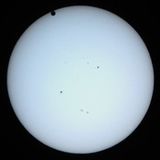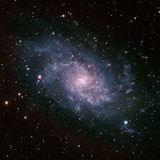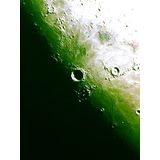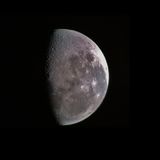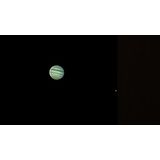
By Tammmy Plotner
Do you love your cell phone with its built-in camera feature? How about the view through your telescope? Have you ever wished you could send a friend or relative a photograph of what you're observing and include them in the fun? If this sounds like you, then there are two products that you'll be very excited to know about-the Orion SteadyPix Universal Smartphone Telescope Photo Adapter and the Orion SteadyPix Telescope Photo Adapter for iPhone. These two awesome gadgets are designed to work with your SmartPhone, iPhone, and most average cell phones with a camera.
What do they do? Check this out?
These inexpensive adapters are a rigid connection which holds your phone steady to the eyepiece of your telescope or spotting scope. You don't need anything special. It's basically a gentle clamp which holds around the eyepiece and a bracket, supporting the phone and aiming the camera lens into the eyepiece. What you see is what you get!
What you are doing is called "afocal imaging." In other words, you're using your telescope as a type of telephoto lens and the eyepiece is doing the work. You can use any magnification level you like and you focus the image by looking into your camera's real-time viewfinder.
Want video? You can do that, too. Any type of photography that your phone is capable of can be translated through the telescope. Don't forget your phone's camera also has adjustments. Experiment with the settings!
What can you expect to see? First off, you're not going to be able to get your phone to perform like the Hubble Space Telescope. As exciting as the technology is, your photography will be limited to relatively simple subjects, like the Moon, planets, bright stars and the properly-filtered Sun. However, don't rule out brighter deep space objects. It all has to do with your phone's camera sensitivity to low light- the lux factor. Lux is the amount of light the camera needs to provide an image. The lower the number, the less light the camera needs to reproduce a clear image. If you can see the object on the screen, then chances are it is going to appear in your photograph.
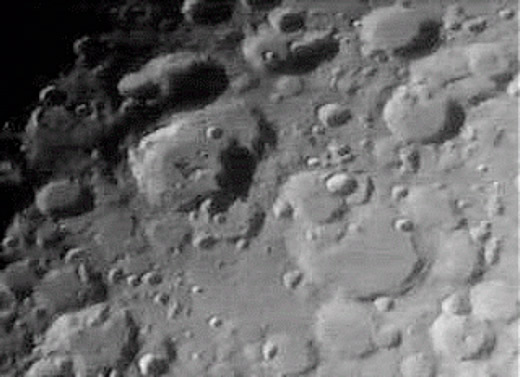
Afocal lunar image courtesy of Tammy Plotner
As you can see, even at low resolution and a very small size, afocal imaging produces some astounding results. With some focusing practice, you'll be able to take (and send) photographs of lunar features, the rings of Saturn, the belts of Jupiter, the phases of Venus, bright star clusters and stellar images. If you want to really heat things up, you can take images of the Sun, too! Just be sure to use a proper solar filter on the telescope at all times.
But, don't stop there. Once you've attached your phone to your telescope, you can also use the display image as a kind of "mini monitor" so others can see what your scope is aimed at. This can be a very handy tool when doing public outreach. Just center the image on something like a particular lunar crater you'd like to explain, and multiple observers can see what you're talking about at the same time! Using your phone to display images works especially great when you're stargazing with children, especially because young children don't always understand not to grab a telescope around the eyepiece when they want to look, and now they can see without touching!
Need more to convince you? Then think about all the things you can do with the images you take. Not only can you share them with your friends, family and co-workers, camera phone images can keep a photographic diary of craters, lunar features, planets and sunspots, record eclipses, transits and occultations. You can even create your own YouTube astronomy video or post to Facebook, or set up an Instagram account. Transfer the images to your computer and add them to your observing reports, or try your hand at enhancing them. The possibilities are only limited by your imagination!
Tammy Plotner is a professional astronomy author, President Emeritus of Warren Rupp Observatory and retired Astronomical League Executive Secretary. She's received a vast number of astronomy achievement and observing awards, including the Great Lakes Astronomy Achievement Award, RG Wright Service Award and the first woman astronomer to achieve Comet Hunter's Gold Status. Tammy Plotner has been a compensated contributor to the Orion Community since November 2012. Orion's product review policy is to post reviews regardless of the writer's positive or negative feedback of the product.




